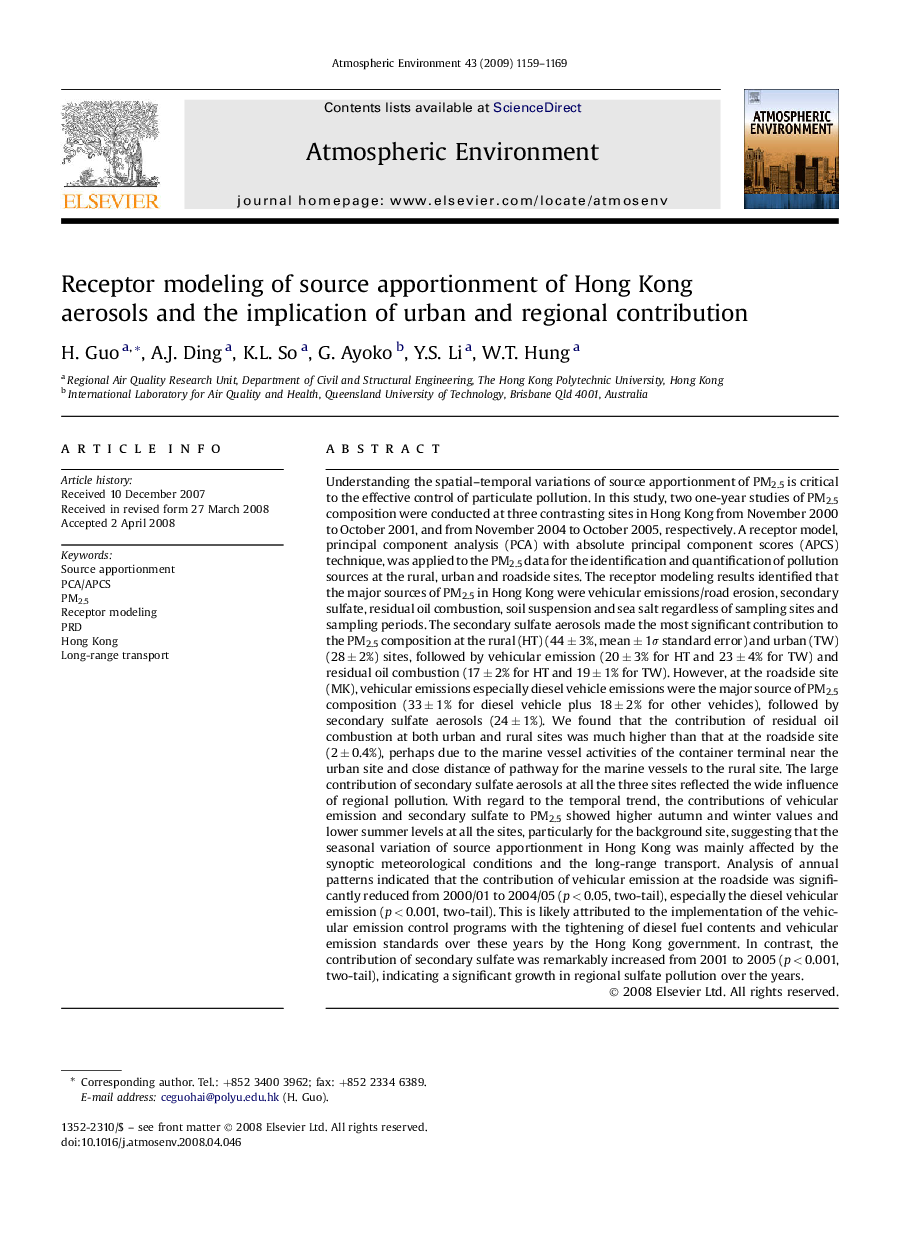| کد مقاله | کد نشریه | سال انتشار | مقاله انگلیسی | نسخه تمام متن |
|---|---|---|---|---|
| 4441997 | 1311133 | 2009 | 11 صفحه PDF | دانلود رایگان |

Understanding the spatial–temporal variations of source apportionment of PM2.5 is critical to the effective control of particulate pollution. In this study, two one-year studies of PM2.5 composition were conducted at three contrasting sites in Hong Kong from November 2000 to October 2001, and from November 2004 to October 2005, respectively. A receptor model, principal component analysis (PCA) with absolute principal component scores (APCS) technique, was applied to the PM2.5 data for the identification and quantification of pollution sources at the rural, urban and roadside sites. The receptor modeling results identified that the major sources of PM2.5 in Hong Kong were vehicular emissions/road erosion, secondary sulfate, residual oil combustion, soil suspension and sea salt regardless of sampling sites and sampling periods. The secondary sulfate aerosols made the most significant contribution to the PM2.5 composition at the rural (HT) (44 ± 3%, mean ± 1σ standard error) and urban (TW) (28 ± 2%) sites, followed by vehicular emission (20 ± 3% for HT and 23 ± 4% for TW) and residual oil combustion (17 ± 2% for HT and 19 ± 1% for TW). However, at the roadside site (MK), vehicular emissions especially diesel vehicle emissions were the major source of PM2.5 composition (33 ± 1% for diesel vehicle plus 18 ± 2% for other vehicles), followed by secondary sulfate aerosols (24 ± 1%). We found that the contribution of residual oil combustion at both urban and rural sites was much higher than that at the roadside site (2 ± 0.4%), perhaps due to the marine vessel activities of the container terminal near the urban site and close distance of pathway for the marine vessels to the rural site. The large contribution of secondary sulfate aerosols at all the three sites reflected the wide influence of regional pollution. With regard to the temporal trend, the contributions of vehicular emission and secondary sulfate to PM2.5 showed higher autumn and winter values and lower summer levels at all the sites, particularly for the background site, suggesting that the seasonal variation of source apportionment in Hong Kong was mainly affected by the synoptic meteorological conditions and the long-range transport. Analysis of annual patterns indicated that the contribution of vehicular emission at the roadside was significantly reduced from 2000/01 to 2004/05 (p < 0.05, two-tail), especially the diesel vehicular emission (p < 0.001, two-tail). This is likely attributed to the implementation of the vehicular emission control programs with the tightening of diesel fuel contents and vehicular emission standards over these years by the Hong Kong government. In contrast, the contribution of secondary sulfate was remarkably increased from 2001 to 2005 (p < 0.001, two-tail), indicating a significant growth in regional sulfate pollution over the years.
Journal: Atmospheric Environment - Volume 43, Issue 6, February 2009, Pages 1159–1169